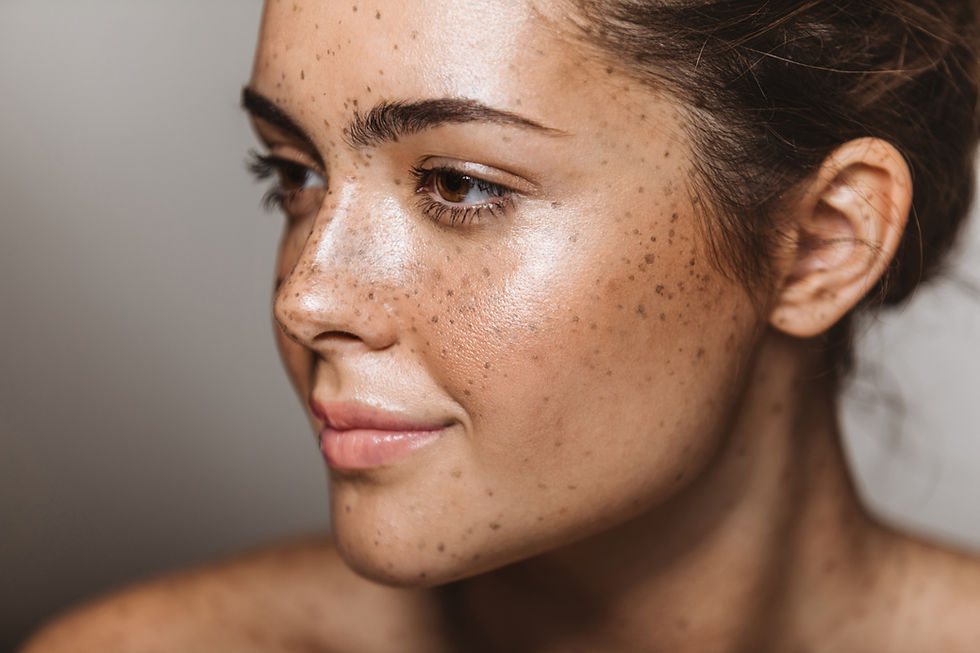Be it persistent acne, chronic dry skin, or stubborn eczema - many of our contemporary skincare dilemmas are age-old. They’ve plagued us for centuries, so why not turn to some age-old solutions as well?

Ayurvedic medicine is one of the world’s oldest medical systems, with origins in India and practices spanning over thousands of years. Essentially, it focuses on a holistic, or “whole body” approach, with the ultimate goal of preserving a delicate balance between the mind, body, and spirit to improve overall health.
In Ayurveda, there are three main life forces or energies that control how our bodies work: these are called doshas. They are Vata dosha, Pitta dosha, and Kapha dosa. Each person has a unique combination of these three doshas, with one of them emerging as most influential.
Vata dosha is considered to be the most powerful of these three, as it controls fundamental bodily functions, such as cell division and movement. Consequently, it also affects breathing, circulation, blood flow, heart function, and the ability to get rid of waste. The body areas associated with this dosha include the large intestine, the pelvis, the bones, skin, the ears, and the thighs. Often, activities such as eating too soon after a meal - as well as emotions such as fear and grief - can disrupt this dosha.
Skin that is commonly associated with this dosha is delicate and prone to wrinkles, and likely dry with small pores.
The pitta dosha mainly controls digestion and metabolism, as well as specific hormones that are associated with appetite. The body areas linked to the pitha dosha are the small intestine, the stomach, sweat glands, skin, blood, and the eyes. Often, those with a prominent pitta dosha may have oily skin and be more susceptible to heart disease, stomach ulcers, inflammation, heartburn, and arthritis. Activities that may disrupt this dosha may include too much exposure to the sun, or eating spicy or sour foods.
The skin that is associated with this dosha is generally oily and additionally prone to rashes, breakouts, or rosacea - if one’s dosha becomes out of balance!
Lastly, the kapha dosha affects muscle growth, the immune system, body strength and stability, and weight/growth. It is associated with the chest, lungs, and the spinal fluid. Health conditions those with a dominant kapha dosha may be more susceptible to include sinus congestion, obesity, diabetes, and gallbladder issues.
Skin associated with this dosha can be characterized by enlarged pores, more frequent blackheads and pimples, and possibly eczema.
In Ayurvedic tradition, our skin is a massive area of focus! As the skin is our largest organ, it is an accurate manifestation of our internal health and the balance and wellbeing of our doshas. While the best thing we can do to achieve a balanced consistution of doshas is to follow an appropriate diet and to avoid harmful factors that can throw us out of balance - like pollution, drastic environmental changes, stress, etc - we can use skincare to protect and nourish our skin, in accordance with our doshas.
Basically, this means that instead of simply noting that you may have “dry skin”, for example, Ayurveda tells us that this dryness reveals far more significant details about our internal health, natural habits, and lifestyle. To tackle these surface level problems, we should look to the broader factors affecting our body and mind: these can include diet, environment, daily lifestyle, and mental health.

Ultimately, the overarching goal of Ayurvedic medicine is to assess oneself holistically - taking into account all aspects and characteristics of our body and psyche, acknowledging that these systems are more connected than we think. Our bodies are vessels of life, and to best preserve them, we have to keep them healthy in every possible way.
Stay tuned for more Ayurvedic wisdom!
コメント